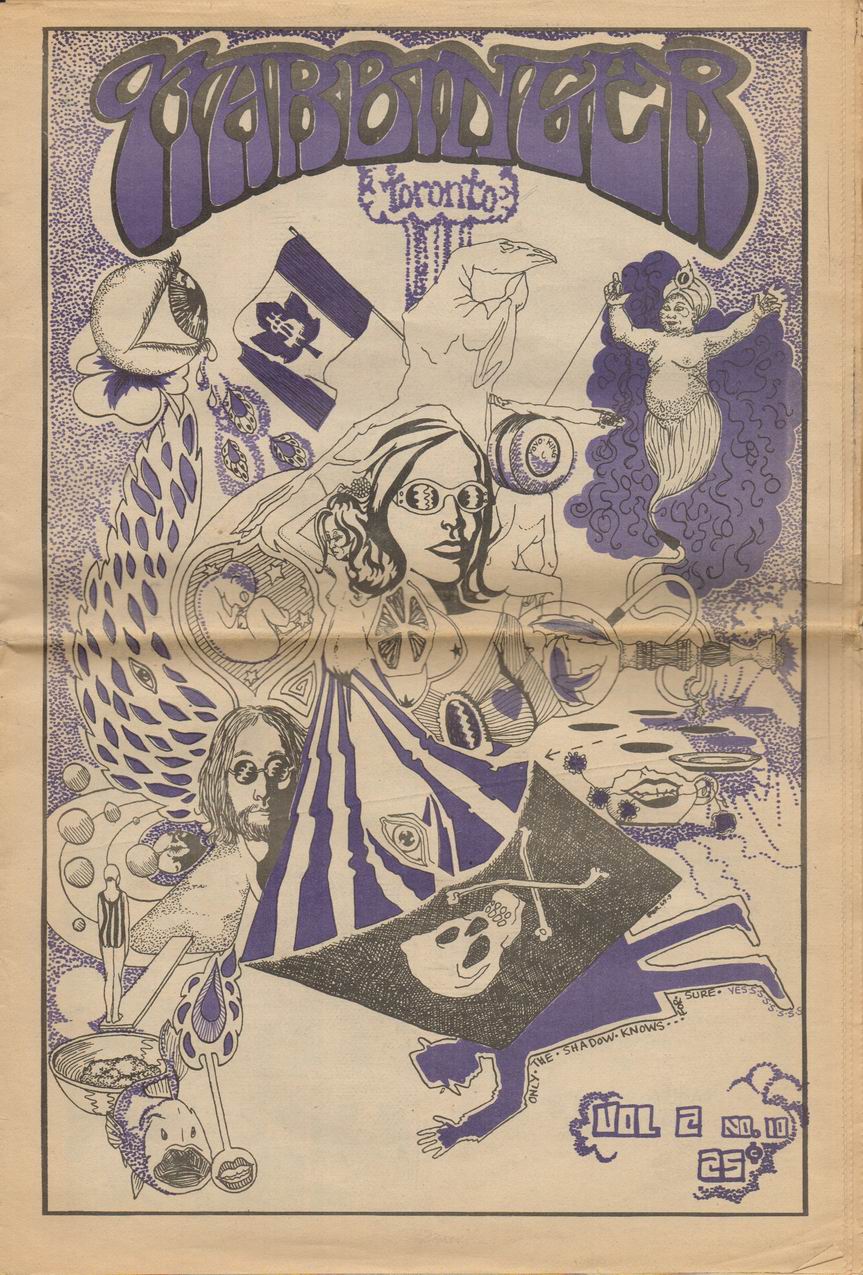
Information to change the world | |
Find Topics, Titles, Names related to your query |

Information to change the world | |
Find Topics, Titles, Names related to your query |
|
|
1960s CounterCulture in TorontoAmidst the overt political developments of the late 1950s and early 1960s, a small but significant portion of youth became attracted to Beat or bohemian culture. These young people were known for spending time in coffee shops – which were fairly new to Toronto – and preferring jazz and folk over mainstream pop music. They thought society was too conformist and wanted the world to be a more just and interesting place. Rejecting the importance other people placed on careers, money and material goods, they sought new experiences and self-discovery. In the mid-1960s, that early counterculture evolved in a “hippie” direction, popularly symbolized by more colourful clothing, longer hair, and brasher music. Hippies admired the Beats’ resistance to Toronto’s boring, commercialized culture, but put more energy into building alternative ways of living. They set up hippie clinics, stores, help centres, homes and other places where people could be treated equally and fairly, and have opportunities to experiment with new lifestyles. Hippies didn’t like how they were depicted in the media. Some even objected to the term “hippie”, which was more commonly used by older adults and journalists than amongst themselves. Many were upset that the issues they cared about were absent from the news or distorted by media bias. Local news coverage of the war in Vietnam, for instance, often reproduced pro-war new reports from American sources. Responding in typical hippie fashion, they said: “Well, then, we’ll make our own damn newspapers.” And that’s how the local underground press got started. Underground newspapers like Harbinger presented readers with frank opinions and alternative news. A few got into trouble for printing swear words or nude drawings.  Some politicos (that is, people who were much more interested in politics than culture), blamed the counterculture for diverting young people away from political struggles, and into self-indulgent lifestyles. Underground newspapers like Guerilla worked to ensure that culture and politics were integrally linked. Many young beats flocked to the Bohemian Embassy, a popular coffee shop and nightspot, where they could catch a live performance by Bob Dylan or listen to a reading by up-and-coming author Margaret Atwood. Yorkville was a popular hangout throughout the 1960s. It was an ideal place to buy or listen to music, pick up a used book, read an underground newspaper, or check out a counter-cultural bar or coffee shop. It had a lively street scene and some of its residents fought to make the area car-free. Rochdale College was a central counter-cultural meeting place in the late 1960s and early 1970s. People from across Canada came to visit this co-operatively-run, 18-storey high-rise. It was where like-minded people rubbed shoulders, attended far-out educational seminars or craft-making workshops, scored some drugs, or found somewhere to sleep. The city had several other counter-cultural hotspots. The area around Bloor Street and Quebec Avenue was sometimes called “Rochdale West.” Many American war-resisters, who fled to Toronto from the United States, lived around Baldwin Street, where they set up hip shops and held cool community events. Queen Street West became the place to be for many counter-cultural people in the 1970s. – Peter Graham Related Topics: Alternative Lifestyles – Counter-Culture – Hippies – Prefigurative Politics – Rochdale – Sixties – Social Alternatives – Toronto – Toronto/Historical Related Reading: |